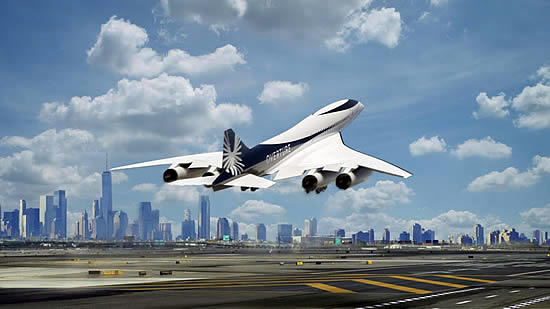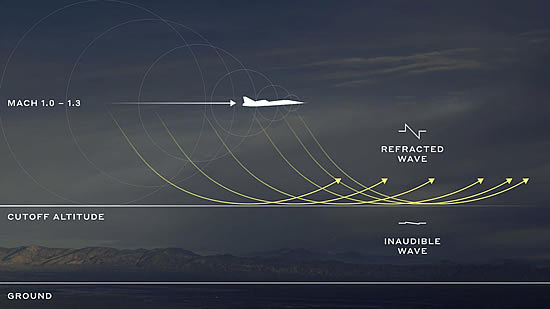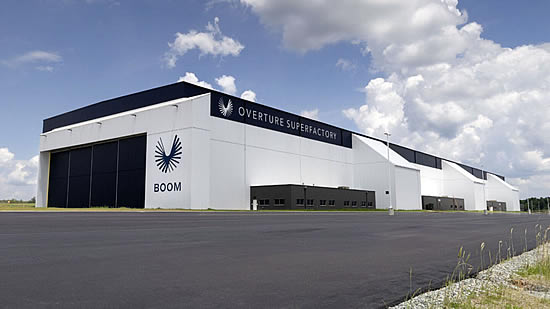Dove Valley, ColoradoBoom’s pursuit of civil supersonic flight prompts new international standards |
Boom Supersonic is making significant progress toward the return of supersonic travel, which provided impetus for new international standards for supersonic aircraft.
The International Civil Aviation Organization (ICAO) took a major step to facilitate the return of commercial supersonic flight, coming to agreement on new global supersonic aircraft noise standards during a February meeting of its Committee on Aviation Environmental Protection (CAEP).
The Federal Aviation Administration represented the United States at the international meeting in Montreal, where 33 member countries gathered to support new recommendations. Boom provided critical data in support of the FAA’s analysis. In 2024, Congress passed a bipartisan bill directing the FAA to continue its work to develop international standards, which has now come to fruition at the CAEP meeting.

Boom is targeting certification for its supersonic airliner, Overture, by the end of the decade, prompting the desire globally to create standards specifically for supersonic flight. The group aligned on a recommended new standard for landing and takeoff noise that recognizes the unique physics and opportunities for noise reduction of supersonic aircraft. The standard takes into account advanced noise reduction procedures that ensure the public is not disturbed by aircraft noise.
“The world wants supersonic travel,” said Blake Scholl, Founder and CEO of Boom Supersonic. “Our mission at Boom has always been to deliver it in a way that makes people feel excited when a supersonic route comes to their city.
"Thanks to the FAA and Congress, we are leading the way with the international community to adopt these new takeoff and landing noise standards. Now that we have proven that we can break the sound barrier without an audible boom on the ground, we are working to update the overland speed limit regulation next.”
Overture will have the same landing and takeoff noise footprint as today’s subsonic long-haul aircraft. One major difference between Concorde and Overture is that Overture will take off without afterburners—the main reason for the noise levels of Concorde’s take offs. Overture’s bespoke engine, Symphony, is a medium bypass ratio turbofan engine, which will be much quieter than Concorde’s turbojet engines with afterburners. Overture will also have a Variable Noise Reduction System, which automatically manages thrust to reduce noise at take off.

Source: Pennsylvania State University Acoustical Model of Mach Cutoff Flight
Boom is committed to creating the best possible experience for passengers and airport communities, and continues to innovate in this area. In February, the company announced Boomless Cruise, enabling supersonic travel over land without an audible sonic boom. During its historic first supersonic flight on January 28, 2025, Boom’s demonstrator aircraft, XB-1, broke the sound barrier three times without generating a sonic boom that reached the ground, demonstrating that quiet supersonic travel is possible.
In order to operate within today’s regulations, Boom plans to operate Overture at Mach 0.94 over land - approximately 20% faster than today’s subsonic jets—only breaking the sound barrier over water, where it would speed up to Mach 1.7, or twice as fast. The data collected from XB-1’s supersonic flight establishes the possibility of Overture traveling up to 50% faster than today’s jets over land without an audible boom.
Bringing this compelling speedup to coast-to-coast routes in the United States would require replacing the existing federal ban on civil aircraft exceeding a speed of Mach 1 - the regulation known as 14 CFR 91.817 - with sensible, data-driven guidance for supersonic flight over land. As currently written, the regulation addresses only supersonic speed, without taking into account that it is possible today for aircraft to fly faster than Mach 1 without creating a boom that is heard on the ground. Updating this standard, originally implemented over fifty years ago, would clear the way for the return of supersonic travel.

Maintaining US leadership in aerospace is critical to our national security and our economy. Opening the door to innovation will unlock the entire industry, expanding the commercial industrial base with ripple effects through the supply chain, creating high paying jobs and spurring economic growth.
Boom will build Overture in the US at its Superfactory in Greensboro, North Carolina.

BlueSky Business Aviation News | 10th April 2025 | Issue #791
Add BlueSky to your marketing mix in 2025!
Unbeatable ad rates | Request our rate card here





